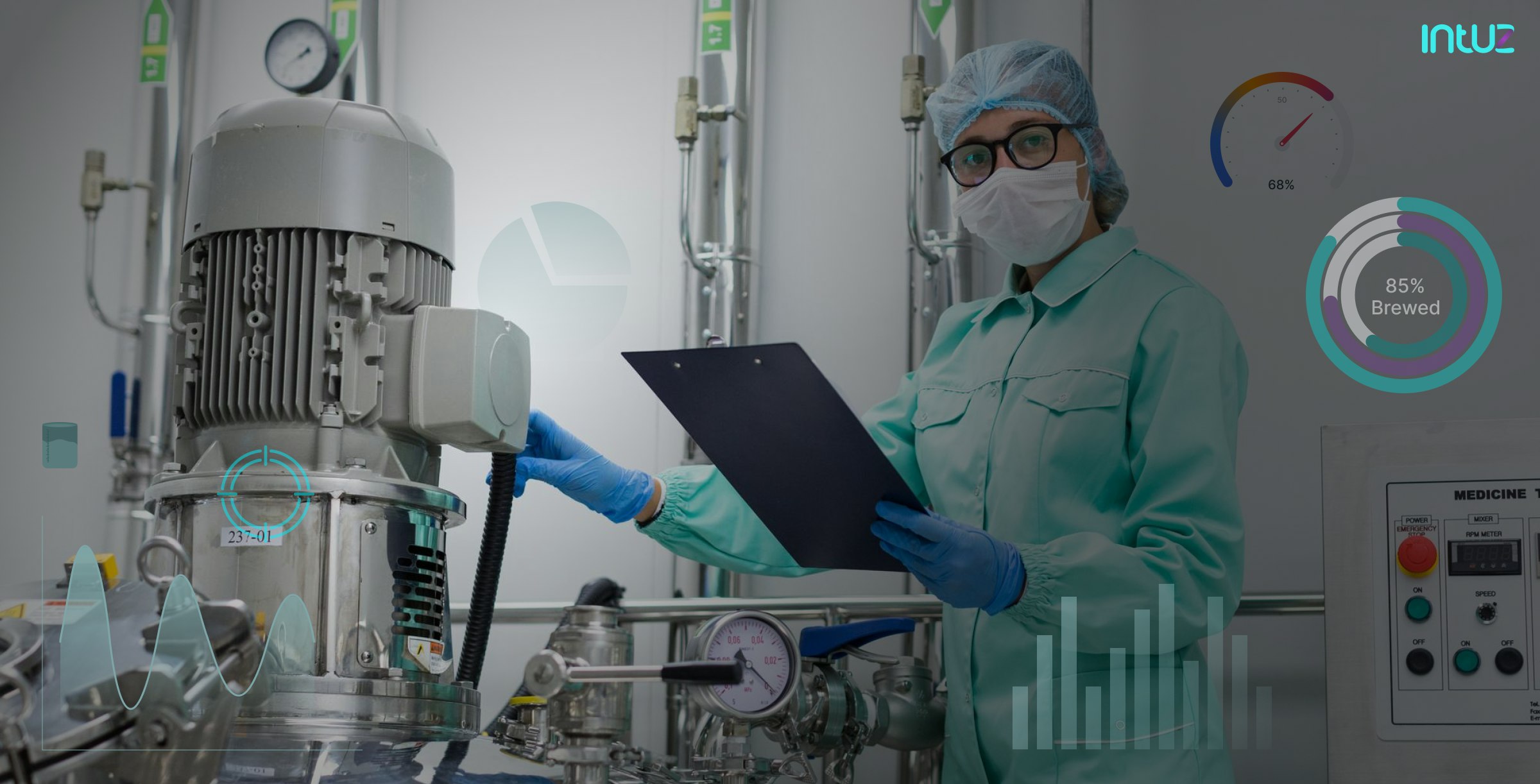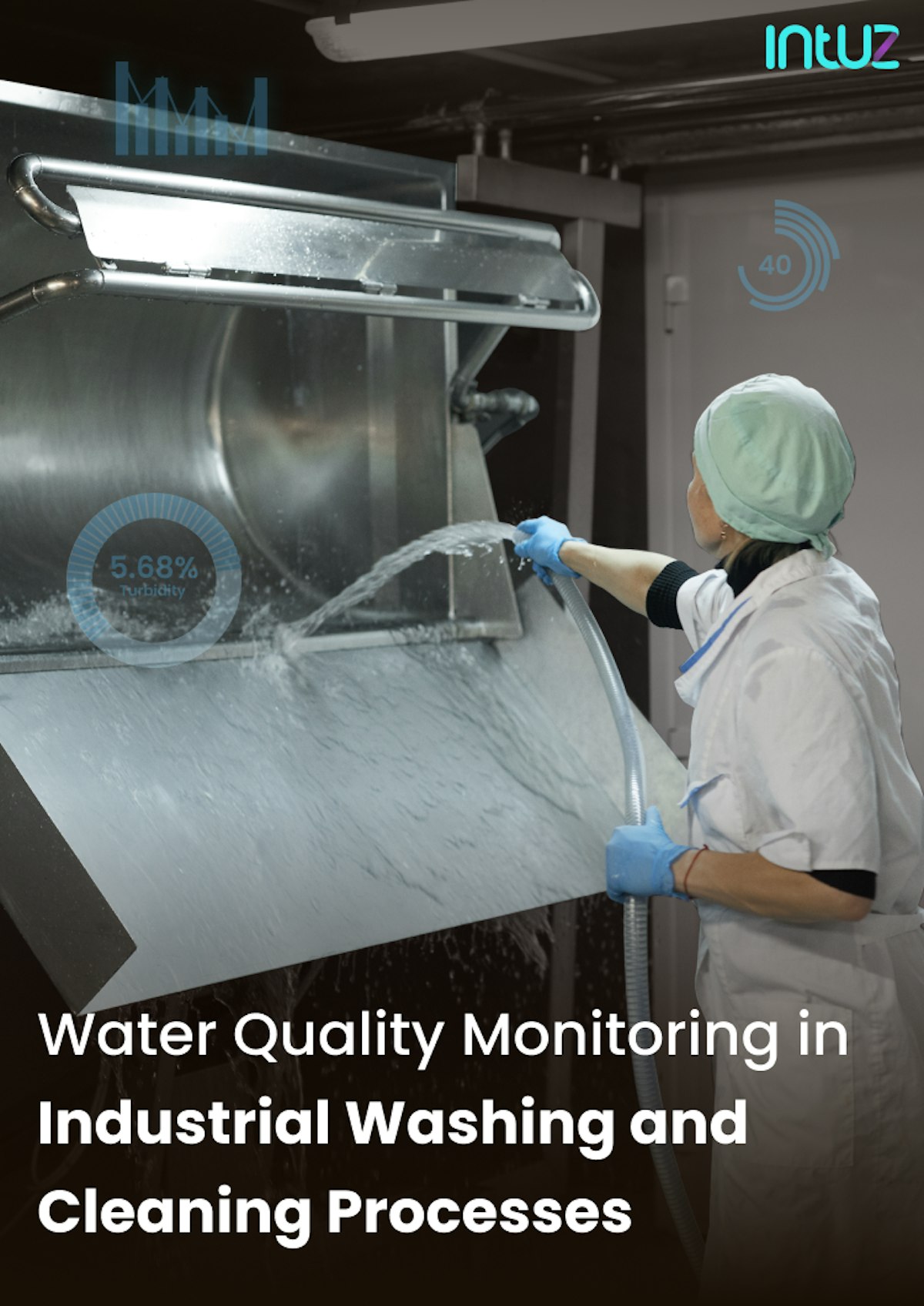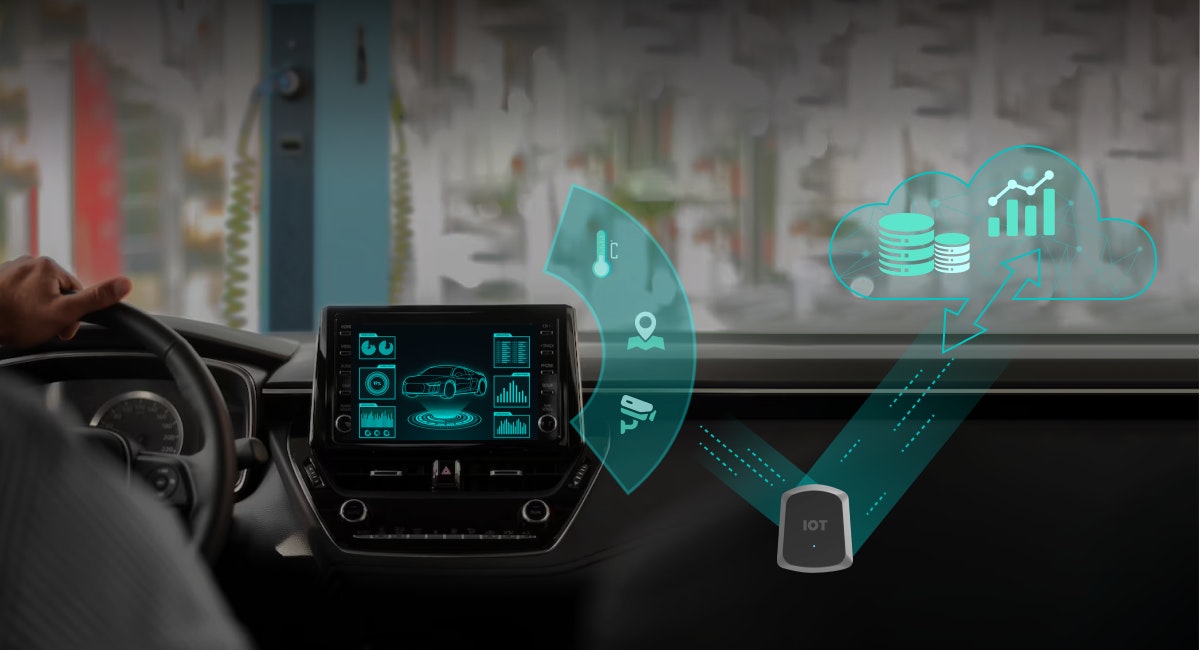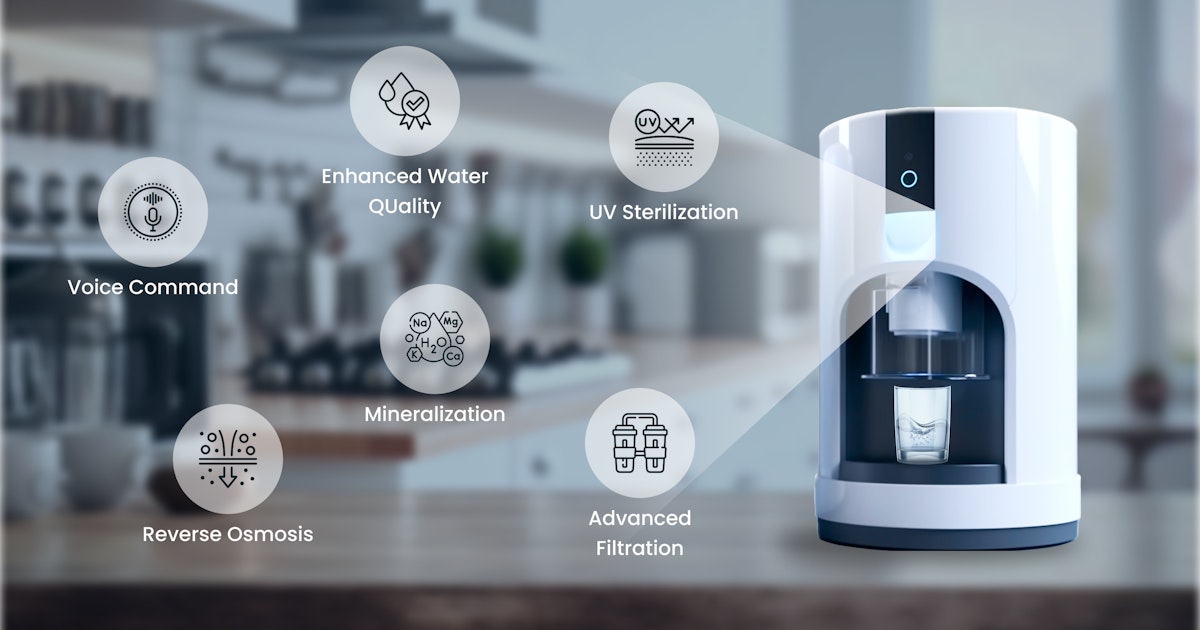Table of Content
Beer holds a significant share of the alcoholic beverage market and is becoming increasingly popular among millennials and Gen Z due to its various flavors and taste offerings. While flavored beer was originally popular in regions such as Europe and North America, its demand is now increasing worldwide.
The development of new brewing and distillation technologies in developing economies has also had a positive impact on consumption patterns. Consumers across the globe want innovative and varied products in the market, driving growth in the beer market.
Do not be surprised when we tell you that the global beer market, valued at USD 743.84 billion in 2020, is now expected to grow to USD 989.48 billion by 2028, at a CAGR of 3.68%. On the other hand, the global brewery equipment market, valued at USD 16.52 billion in 2022, is predicted to expand at a CAGR of 5.9% by 2030.
In addition, market players are investing in various initiatives to enhance their presence in this brewing and distillation industry. These include investments in outdoor expansion, cellar equipment, brewery expansion, better yeast management practices, and energy recovery methods. These efforts aim to strengthen their market position and stay competitive.
Why condition monitoring and quality control in the brewing and distillation industry matters
In any brewery - big or small- the risk of issues arising during brewing increases when manual monitoring is not possible, particularly during off-hours and weekends. You must know that fermentation is a crucial stage in brewing where yeast consumes sugars, leading to an increase in alcohol content and a decrease in liquid density.
Variations in factors such as temperature or humidity during this process (which can take anywhere between a few days to weeks) can negatively impact the final taste. Sure, daily liquid draws from the tank may seem like an excellent way to check for consistency.
However, when any problems are detected, it may be too late to rectify them. Therefore, it is crucial to have continuous monitoring in place to detect and address any potential issues promptly and ensure consistent quality.
Implement IoT Monitoring in Your Brewing Production Facility!
Let's Get StartedTop challenges faced by the brewing and distillation industry
Despite considerable advancements in technology over the past two decades, this industry continues to face significant issues that hamper overall productivity, operational success, and business success, including:
1. Unstable temperature during product storage and distribution
Controlling temperature at these stages is vital for preserving the final product's freshness, taste, and stability. Exposure to high temperatures or extreme temperature fluctuations can accelerate the beer aging process, causing undesirable changes in flavor and aroma.
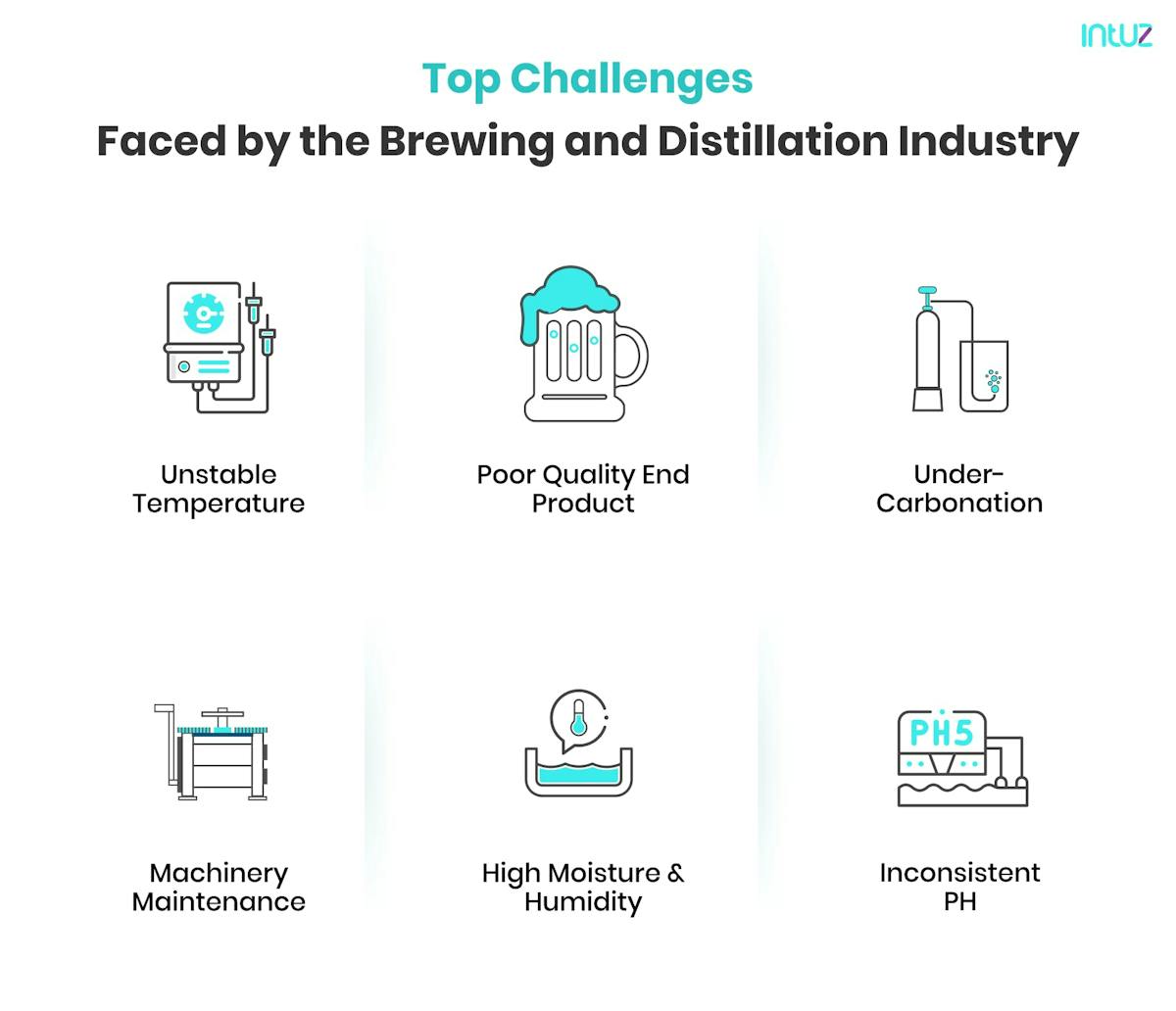
2. Underdeveloped or poor-quality end product
This may result from a pressure drop, particularly during carbonation. Pressure changes can affect dissolved gas levels, which, in turn, can result in inconsistencies in taste, texture, and mouthfeel. To avoid this, maintaining stable pressure conditions is vital.
3. Under-carbonation due to low pressure
This can lead to a flat, lifeless beer lacking the desired level of effervescence. Proper carbonation levels are essential for creating a balanced mouthfeel and enhancing the overall drinking experience.
4. Lack of uniformity in temperature
Maintaining uniformity in temperature throughout the brewing process is essential to ensure consistent flavor and quality of the final product. Different stages of brewing, such as mashing, boiling, and fermentation, require specific temperature ranges.
Deviations from these ranges can result in off-flavors, poor fermentation, or stalled yeast activity, affecting the overall beer quality.
5. Machinery maintenance costs
Expenses can increase due to temperature fluctuations and uncontrolled humidity, which causes equipment corrosion, condensation, and wear and tear, leading to more frequent breakdowns, reduced efficiency, and higher maintenance expenses.
6. High moisture and humidity
These factors promote the growth of spoilage microorganisms, such as bacteria, mold, and wild yeast, resulting in the beverage's off-flavors, sourness, or complete spoilage.
Especially excess moisture in the air can cause condensation on walls, in the hops storage area, fermentation areas, and yeast rooms. This creates a safety hazard and can spoil raw ingredients, affecting the quality and consistency of the final product.
On the other hand, maintaining low humidity in production processes is challenging but essential for improving quality in a clean, aseptic environment with controlled humidity and temperature. A well-controlled environment reduces the risk of contamination and spoilage while ensuring the consistency and safety of the final product.
7. Inconsistent pH level
Maintaining consistency in the pH level during brewing can be difficult due to factors such as temperature, water chemistry, and ingredient quality. However, it is crucial, as the pH affects various aspects of the process, including enzyme activity, flavor development, and yeast health. pH monitoring using IoT ensures efficient starch conversion, optimal hop utilization, and desirable color and flavor development.
Cutting-edge Industrial IoT Solutions and Development Services Company
Explore the servicesIoT solutions for quality monitoring in the brewing industry
IoT is fast seeping into every corner of the food and beverage industry, transforming it from reactive to proactive to predictive. However, with greater choice and variety of alcoholic beverages for consumers comes bigger challenges for the manufacturers.
In view of this, more and more brewing and distillation companies are turning to IoT solutions and sensor technologies to enable remote monitoring, control, coordination, and integration of physical systems, resulting in seamless operations and better execution of processes. Let us take a look at how IoT solutions help the brewing industry:
1. Temperature monitoring with sensors (RTD sensors)
Temperature control in the brewing industry is an essential aspect of brewing, as it affects the quality and taste of the beer being produced. The traditional methods involved manual measurements using thermometers, which were time-consuming and prone to human error. However, with the advent of IoT technology, this has become much more efficient and accurate.
IoT-enabled temperature sensors, such as Resistance Temperature Detectors (RTD), are placed at different points in the brewing process to provide continuous, real-time data on the temperature conditions. This data is transmitted wirelessly to a central monitoring system, allowing brewing operators to track temperature changes and make modifications as necessary to ensure that the brewing process is proceeding smoothly and efficiently.
RTD sensors are particularly effective because they are highly accurate and reliable. They use a metal element, such as platinum or nickel, whose electrical resistance changes with temperature. By measuring the resistance of the metal element, the sensor can calculate the temperature with great precision.
Furthermore, RTD temperature sensors are used for tracking the temperature of the wort in real time. The data can then be transmitted to the IoT-based control panel, which can adjust the valve assembly to control the wort flow.
By tracking the wort temperature, the control panel can ensure that the wort flows at the correct rate to maintain consistent temperatures throughout the brewing process.
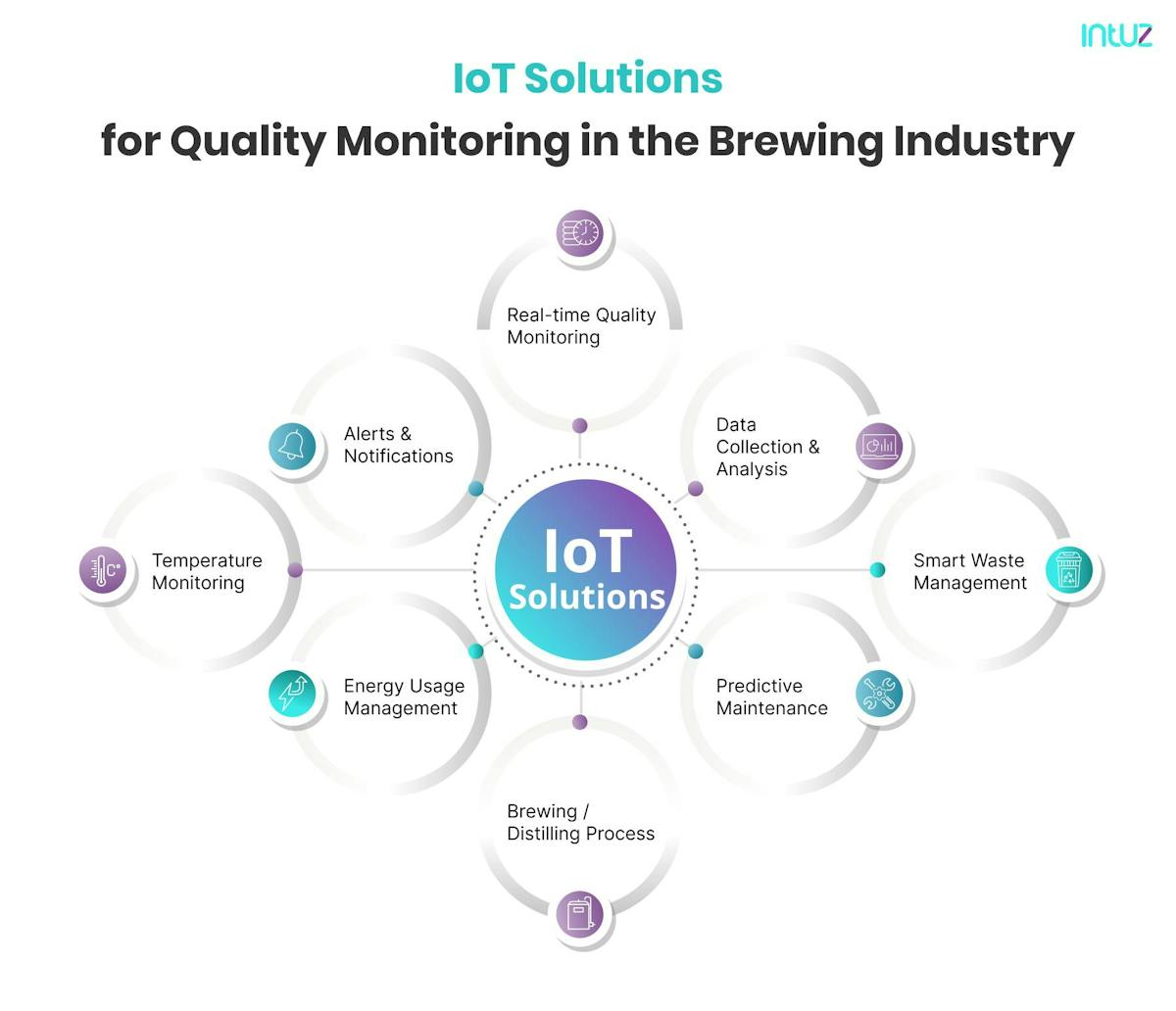
2. Alerts and notifications for various fluctuating parameters
In the brewing and distillation industry, maintaining optimal conditions for various parameters such as pressure, humidity, alkalinity, temperature, and pH is critical for ensuring high-quality beer production. However, it is not always possible for human operators to continuously supervise all of these parameters, especially when dealing with large-scale brewing operations.
This is where IoT systems come into play, as they can keep track of these parameters in real time. When any parameter deviates from its optimal range, the system can immediately send an alert or notification to the brewing operator through a mobile app, email, or other communication channels.
They can then take prompt corrective action to bring the parameter back within its optimal range, minimizing the impact on product quality and process efficiency.
For example, if the temperature in a fermentation tank rises above a certain threshold, the IoT system can alert the brewing operators, who can take steps to cool the tank down before the beer quality is compromised. Similarly, if the pH of the brewing water is too high, the system can alert them to add a pH-lowering agent to prevent off-flavors from developing in the beer.
3. Smart waste reduction and energy usage management
IoT technology can help reduce waste and improve energy efficiency by providing real-time data and insights to make informed decisions for cost savings and environmental benefits.
IoT-enabled sensors track waste production throughout the brewing process. By analyzing this data, brewing operators can ascertain steps where waste is being generated and take steps to minimize it. For example, sensors placed on fermentation tanks track the amount of yeast being produced to help alter recipes to reduce waste.
Similarly, with IoT, brewing operators can find out where energy is being wasted and take steps to reduce it. For example, IoT sensors on brewing kettles help in maintaining temperature in the distillation process and enable optimizing it as necessary to reduce energy consumption.
4. Predictive maintenance for preventing equipment failure
In the brewing and distillation industry, equipment failure can be a significant issue causing production downtime, costly repairs, and replacement expenses. To prevent this, many breweries use a reactive maintenance approach, where maintenance is only performed after equipment has failed. However, this can be rather costly and disruptive to the brewing process.
A more effective approach is predictive maintenance, which uses data analytics and IoT sensor data to determine patterns and trends that signal potential equipment failure. The technique can help brewing operators perform maintenance proactively before equipment failure, reducing downtime and preventing costly repairs or replacements.
IoT sensors can regulate various equipment parameters such as temperature, pressure, and vibration throughout brewing. The data is transmitted wirelessly to a central monitoring system, which analyzes it in real time.
5. Data collection and analysis for resource management
The data collected from IoT sensors in the breweries could include information about the usage of cleaning agents, electricity consumption, and water supply. With data analysis, brewing operators can ascertain opportunities to optimize their operations and reduce costs.
For example, they may find they are using too much water or electricity during specific processes and can refine their operations to reduce usage.
Additionally, cost data, including the cost of water, cleaning agents, membranes, electricity, and beer loss, can help brewing operators take action regarding their operations, such as which processes are most cost-effective and where they can reduce waste.
Performance data, such as the degree of utilization, efficiency, and downtime, empowers them to identify bottlenecks or areas where efficiency can be improved. For instance, they may find that a particular piece of equipment is causing downtime and can be replaced or repaired.
Finally, quality data related to oxygen intake, color, original extract, and haze is also studied. For example, if the oxygen intake is too high during a particular stage of the brewing process, it can cause off-flavors in the beer. This information ensures the beer meets high-quality standards.
6. Real-time product quality control
This refers to the ability to check and fix quality in real time during the production process. In the context of breweries, IoT sensors monitor various quality parameters, such as alcohol content, color, and aroma, in real-time.
This can help reduce waste by catching quality issues early in the production process and preventing the need to discard batches of beer that do not meet quality standards.
Real-time quality control also enables breweries to achieve greater product consistency, essential for building a loyal customer base. They can build a reputation for producing high-quality beer their customers can rely on.
7. Brewing and/or distilling process monitoring
IoT devices track various aspects of the brewing and distilling processes, such as specific gravity and airflow, enabling real-time interaction with the data. Specific gravity, for instance, is a measure of the density of the wort or wash, which can provide insight into the progress of the brewing or distilling process.
If the specific gravity is too low, the brewing operator may need to fine-tune the temperature or fermentation time to ensure the wort or wash is properly fermented. In addition, proper airflow is essential to maintaining consistent fermentation and distillation conditions.
If the airflow is too low, the brewing operator may need to calibrate the ventilation settings or heating system to maintain uniform conditions. Brewing and/or distilling process monitoring helps minimize losses by preventing batches of beer or spirits from being ruined due to improper fermentation or distillation.
IoT In The Automotive Industry: How It Ensures Coolant Quality Control
Read NowOver to you
IoT technology has significantly enhanced operational efficiency by eliminating the need for manual processes - regardless of any industry niche or business size.
For instance, IoT sensors monitor tank levels and transmit information to the user's dashboard in brewing and distillation, enabling quality control of the brewing process. Operators can make informed decisions based on accurate data, preventing potential challenges.
This quality produces effective and accurate results, offering a competitive edge over other businesses.
Book a Free 45-minute Consultation with Our IoT Experts Today! Get a customized roadmap and strategies to leverage IoT to enhance quality control by integrating IoT monitoring in your distillery.
